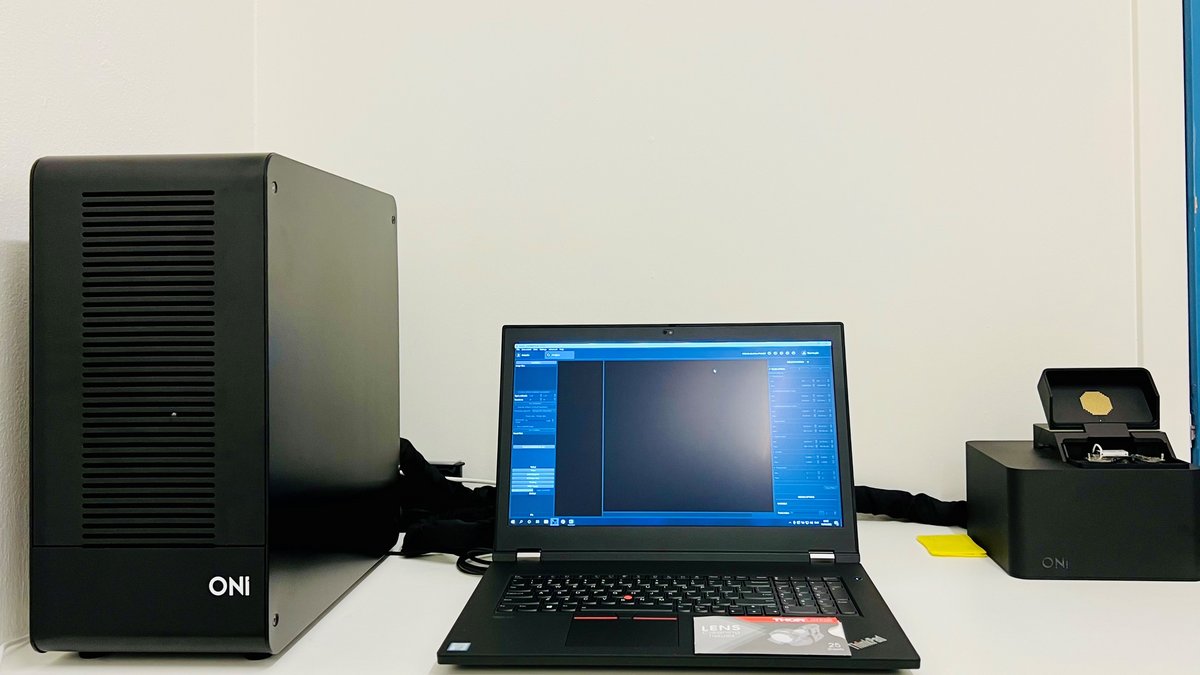Nanoimager, ONI
Would you like your image to be displayed here?
Please contact us or send an email to imaging@biomed.au.dk, if you would like to share your images - Thank you
The Nanoimager super-resolution microscope from ONI allows investigations down to single-molecule level.
Applications in brief
With its super-resolution capacity, this microscope is excellent for analyses down to single-molecule level, e.g. allowing
- observation and tracking of single molecules, i.e. spatial distribution
- biomarker quantification
- nanoscale morphology
- investigations of molecular interactions in intracellular pathways
- localization of extracellular vesicles for cell-to-cell communication
- characterization of pathogens (ensure that you comply with local safety regulations)
Features
- Resolution down to 20 nm
- Single-molecule localization in multiple colors and 2 channels
- Live-cell imaging facilitating single-particle tracking
- Precise control and measurement of temperature with heating elements keeping the entire microscope unit at a stable, uniform temperature
- Up to 1W laser power at the source; 8-12 kW/cm² power density at the sample plane
- Rapid and precise stabilization of microscope focus with locking technology to minimize Z-drift
- Post-acquisition drift correction with nanometer precision
Which samples may I use?
Selected samples, but not limited to:
- tissue sections
- fixed cells
- live cells
Training and use
Case studies
- Extracellular Vesicles
- Single-molecule Imaging for Neuroscience
- Eppigenetic Mapping
- Characterizing Pathogens (ensure to adhere to local rules regarding pathogens)
- Immuno-Oncology
Specifications
| Full equipment name | Nanoimager, ONI |
| Objective | Standard, Olympus UPLXAPO100 |
| Mag./NA | 100x/1.45, WD 0.13 mm |
| Medium | Oil |
| Lasers | Type and Power | Selected dyes |
| 405 nm | Diode, 1 W | DAPI, Hoechst 33342 |
| 488 nm | Diode, 1 W | Alexa488, Atto488, CF488A |
| 561 nm | DPSS, 500 mW | Alexa555, Dylight555, CF568 |
| 640 nm | Diode, 1 W | Alexa647 |
| Total number of imaging colors | Simultaneous imaging channels |
|
|
| Camera |
|
| sCMOS camera |
|
| Illumination modes |
|
| Imaging Modalities |
|
| Field of view |
|
| Achievable Resolution |
|
| Other light sources |
|
| 3D imaging technique |
|
| Emission Channels |
|
| Focus system |
|
| Time for super-resolution full frame |
|
| Sample stage |
|
| Mechanical stability |
|
| Temperature control (live cell imaging) |
|
Special Features |
|
Software Features |
|
FAQ
Equipment
- Which slides and chambers are compatible with the ONI Nanoimager?
Coverslips: optimally 1.5H coverslips, which have 170 µm thickness
Chambers: optimally with #1.5 glass bottom
- Sample chambers/coverslips must be less than 97 mm long, 35 mm wide and 13 mm in height

